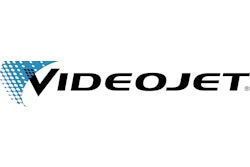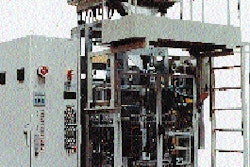The use of water-soluble pouches for insecticides is not new, nor is the idea of packaging those pouches into a flexible envelope. Dow's Dursban insecticide is a good example of the concept (see PW, Nov. '94, p. 38). However, Kansas City, MO-based Bayer Corp., Agricultural Div., was searching for an even more involved package for its new product, Premise® 75 Insecticide. Sold only to licensed pest control operators (PCOs), the company's top priorities were user-friendliness and safety. Features such as tamper-evidence, reclosability, and individual compartments for premeasured packets would eliminate the PCO's need for measuring, and protect against moisture. "We really tried to forget everything we knew about packaging and create this envelope from scratch," says Cecil Childers, former product manager for Premise 75. Childers says he and packaging designers at Bayer were unaware of the Dursban package at the time of Premise 75's conception. But they had worked with the converter of the Dursban envelope, Pactech (Rochester, NY), before, and they called on the company again for help with the Premise 75 package. Pleased with Pactech's material, they next contacted BPS (West Helena, AR) to copack their new product. The package starts with Chris Craft's (South Holland, IL) Monosol® water-soluble polyvinyl alcohol film. Pouches holding 2.2 oz of powdered product are formed, filled and sealed by BPS. The pouches are then inserted into premade, laminated envelopes from Pactech. One pouch fits into each of four separate compartments, aligned horizontally. BPS currently produces about 7ꯠ PVA pouches/shift or 1껎 envelopes/shift. They're hand-packed into corrugated shippers holding four envelopes and then sent to warehouses or distribution centers. Bayer is keeping its customers, including PCOs like the Atlanta-based Orkin Exterminating Co. Inc., happy with the new package. Orkin plans to sell its customers on the premise behind Premise 75: this is the first product of a new chemistry of "termiticides." Premise 75 is the first powdered concentrate, says Bayer. It's said to be odorless, safe when used near humans and pets, and environmentally friendly. Package concept "This package was designed to accommodate our customers with measurable, definable quantities," says Gregg Storey, product manager, pest control products for Bayer. To use, the PCO first determines how much insecticide is necessary per application. "Typically," Storey says, "a PCO wants to work with 100 finished gallons-the industry standard for termiticides." Each water-soluble PVA pouch contains enough concentrate to make 25 gal of insecticide when mixed with water. Each four-pack envelope, therefore, makes 100 gal. However, he adds, there are times when "you may just want to spot treat an area with 25 gallons." Thus the 2.2-oz pouch size. Common alternatives are liquid concentrate termiticides sold in single containers that reconstitute to make 100 gal. However, preparing 25 gal of termiticide for a spot treatment would necessitate pouring a fraction of the container contents into a measuring device, which might result in splashing or dripping of this hazardous liquid. Plus PCOs would then have to transport unsealed containers in their trucks, requiring them to meet U.S. Dept. of Transportation regulations. "There are DOT regulations on all the other packages," says Childers, "but not for ours." "If a PCO only needs 25 gallons," continues Dan Terry, senior contract manufacturing representative for Bayer, "he simply unzips the envelope to reveal the first compartment, pulls out the first bag and then rezips it. This protects the remaining doses for future use. PCOs don't always have dry gloves when they're mixing insecticides. Reclosing also protects against natural elements-moisture in the air, or rain." However, if a water-soluble pouch were to become wet, he maintains, it would still be contained within its heat-sealed compartment. Multi-components The Premise 75 envelope is made up of four parts: rollstock, zipper material, zipper tab and tamper-evident seal. Georgia Packaging (Columbus, GA) converts the materials, comprising 48-ga polyester/12-lb white low-density polyethylene/.0003 foil/22-lb LDPE, into rollstock. Thanks to the foil, this lamination minimizes the moisture vapor transmission rate to protect the inner pouches. Graphics, including the Premise 75 logo and user information, are reverse-flexo-printed in two colors, also by Georgia Packaging. Pactech runs the material through a GN-48 bag-forming machine from GN Packaging Equipment (Mississauga, Ontario, Canada) that was significantly modified to accommodate the location of the zipper. Unlike most reclosable bags that position the zipper on the front and back, the Premise package is more like an envelope. Both components of the zipper are only on the front of the envelope, an inch below the edge. To do this, the rollstock is folded twice to create what looks like a flattened tube. The machine then seals the sides of the envelope, as well as three additional locations parallel to the sides, to create the envelope's four compartments. A final seal, near the bottom of the envelope, occurs after filling at BPS. Meanwhile, at a second station, excess material under the bottom seal area is trimmed. At a third station, the zipper, provided by Minigrip/Zip Pak (Manteno, IL), is heat-sealed to each end of the rollstock. Finally, one end of the zipper is crushed with a unique heat-seal bar designed by Pactech. After the envelope is formed, brass zipper tabs, also supplied by Minigrip/Zip Pak, are manually applied and pulled to a closed position. The other end of the zipper is then adhered with a Branson Ultrasonics (Danbury, CT) 900 Series semi-automatic ultrasonic crusher. Next, tamper-evident labels are manually applied over the zipper tab. Supplied by TLF Graphics (Rochester, NY), these pressure-sensitive, oriented polypropylene labels adhere in a way that leave a "Void" message once lifted. The labels are flexo-printed in a single color and die-cut. Pactech can produce up to 25ꯠ envelopes/day, in a single-shift operation. The company sends formed envelopes to BPS, which fills them for Bayer. Operators fill them manually from the bottom opening, which is then heat-sealed. Next, two preprinted bar code labels, removable for order documentation, are manually applied to the lower right hand corner of the envelope. Finally, lot codes are printed below the bar code label area, with a Videojet (Wood Dale, IL) Model 37e ink-jet unit. Safety first "There is a significant difference in the way that Premise 75 and liquid products are handled," says Terry. "It takes a lot more liquid to treat a house. Then you have a whole bunch of plastic containers to decontaminate and get rid of. With this product there is one aluminum envelope that has no contamination on it. You can fold it up and put it in your trash can. "It was really designed for the contamination issue, and for the PCO," he says. However, the package uses 35% less packaging materials than an equivalent rigid container for liquid, according to Pactech. It takes 33% less storage and transportation space than a rigid container, and yields a freight savings of 45%. Another focus of the package is tamper-evidence. "We haven't had any problems, really," says Storey. "But we can tell if the product has been tampered with or not." Time to automate? Although BPS's rate of manually filling 7ꯠ water-soluble pouches/shift is nothing to sneeze at, Bayer knows that automation is a possibility for the future. Since the product's introduction in November, 1995, it has been successful enough for Bayer employees like Dan Terry to begin considering automation. One concept he's been tossing around would work as follows: first, a vacuum feeder would lift empty envelopes from a top-feed self-leveling hopper. Vacuum cups would open individual compartments of the envelope and position them beneath plunging funnels. PVA pouches would then drop through the funnels, into the envelope. Funnels would retract, and the envelope would be heat-sealed. An automated line such as this would result in a 66% labor savings, he believes. However, Terry is quick to stress that plans to automate depend on the success of Premise 75. "This is a product launch," he says. "Growth would determine when it would be economically feasible to automate. But there is the potential."


























